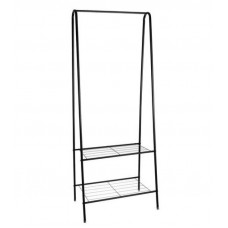USB TO SATA 3.0 HDD SSD ADAPTER- INTERFACE 3.0 – provides fast data transfer, which significantly speeds up file copying and transfer operations. It is also compatible with USB 2.0.
- LEDS INDICATE OPERATION – the product has LEDs that indicate the adapter's operation. The red LED indicates correct power supply, while the blue LED indicates disk operation. The device can be connected even while the computer is running.
- EASE OF USE – the adapter is Plug and Play, does not require driver installation, which allows immediate use after connection.
- COMPATIBILITY – the adapter supports operating systems such as: Windows 98, SE, ME, 2000, XP, Vista, Windows 7, 8, 10, MAC OS 9.X / 10.X / Linux.
- SPECIFICATION - standard: 3.0; compatibility: 2.0; system: Plug & Play; compatible with 2.5-inch HDD and SSD drives; connectors: USB / SATA-22pin; max transfer speed: 6Gb/s; compatibility: Windows 98, SE, ME, 2000, XP, Vista, Windows 7, 8, 10, MAC OS 9.X / 10.X / Linux; dimensions: 32 x 4.5 cm; weight: 0.024 kg; weight in packaging: 0.027 kg, material: ABS
ADAPTER SPECIFICATION: - standard: 3.0
- Compatibility: 2.0
- system: Plug & Play
- compatible with 2.5-inch HDD and SSD drives
- max transfer speed: 6Gb/s
- connectors: USB / SATA-22pin
- Compatibility: Windows 98, SE, ME, 2000, XP, Vista, Windows 7, 8, 10, MAC OS 9.X / 10.X / Linux
- dimensions: 32 x 4.5 cm
- weight: 0.024 kg
- weight in package: 0.027 kg
- Material: ABS
The USB to SATA 3.0 adapter is a must-have tool for anyone who frequently works with HDDs and SSDs. Its ease of use, high transfer speeds, and wide compatibility make it an ideal solution for data transfer, disk cloning, data recovery, and disk testing. Thanks to its compact design and Plug and Play function, the adapter is convenient to use both at home and at work. WARNING CONTENT: 1. Make sure the USB to SATA 3.0 adapter is compatible with your hard drive or other SATA device.
2. Connect the adapter to your computer according to the manufacturer's instructions. Make sure your computer and adapter are turned off before
you connect or disconnect a SATA device.
3. Make sure the USB port is providing enough power for the SATA device to function properly.
4. Before disconnecting the SATA device from the adapter, make sure that all write and read operations have been completed. Press
the appropriate button in the operating system or wait until the system has finished working with the device before disconnecting it. Sudden
Disconnecting the device may result in data loss or disk damage.
5. Make sure your device is protected with appropriate antivirus and anti-malware software. Connecting
external devices to your computer always carries a risk of infecting your computer with malware.
|





















